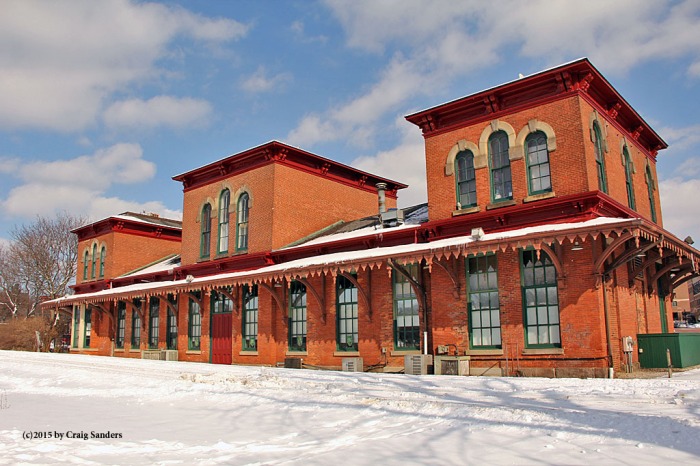Posts Tagged ‘depot’
Keeping the Railroad Heritage Alive in Kent
The Atlantic & Great Western built this French (sometimes called Tuscan) Revival style railroad passenger station in Kent, Ohio, in 1875.
To get this depot the townspeople had to agree to pay at least $4,000 of the $10,000 cost of its construction. Back in the late 19th century the people were fussy about the appearance of their town’s train station.
It was, after all, the first thing that visitors noticed about their city. Kent residents were so enthusiastic about getting a new station that they contributed $4,400 toward its cost.
The A&GW line would eventually become part of the Erie Railroad and, after October 1960, the Erie Lackawanna.
The last passenger train to serve this station was discontinued in early January 1970. No longer being used, the depot fell into a state of disrepair and the railroad said in 1974 that it was considering razing it.
The residents of Kent once more opened their wallets for a train station. Bruce Dzeda in his book Railroad Town: Kent the Erie Railroad, paraphrases an author as saying the station may have been owned by the railroad company but emotionally it belonged to the people of Kent.
The Kent Historical Society purchased the station in early 1976 for $27,000 and spent $379,000 to restore it.
The first floor of the depot was transformed into a restaurant named the Pufferbelly, in recognition of the building’s railroad past. It opened on Dec. 6, 1981.
The Pufferbelly closed at the beginning of January 2017 but by May it will become another restaurant that also recognizes the building’s railroad heritage.
The white tablecloth Italian restaurant that will open here will be named Treno, which is Italian for train.
There are still railroad tracks in front of the depot, but rail traffic on them is minimal. Few diners at Treno will see a train roll past the windows as they eat pasta.
But generations of Kent residents can feel good knowing that “their” station may not serve passenger trains anymore but it remains symbol of their community.
